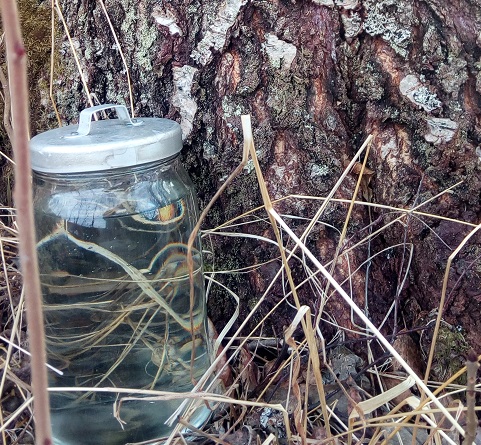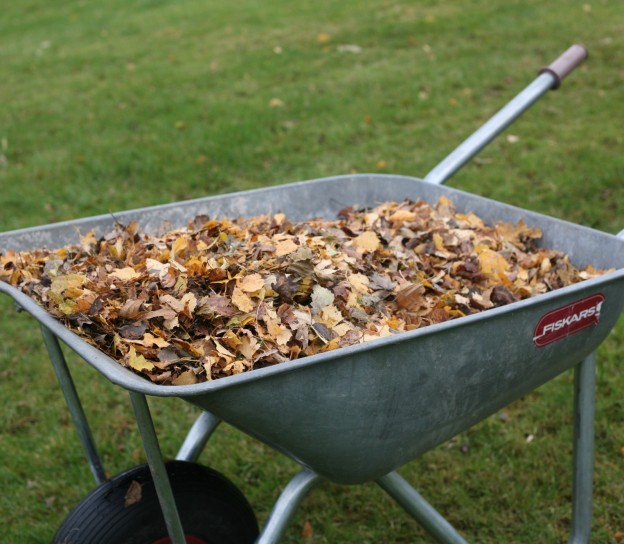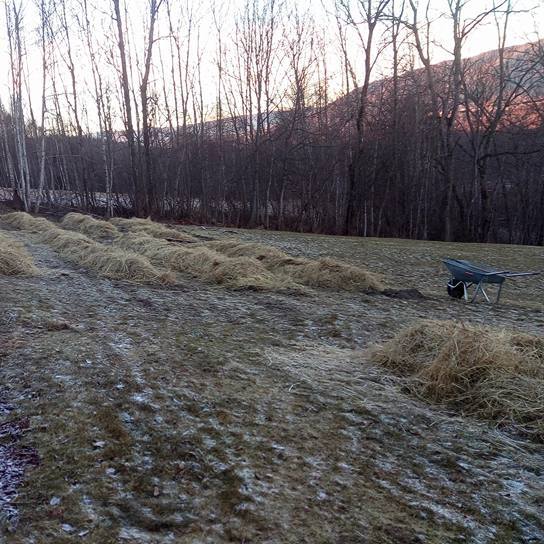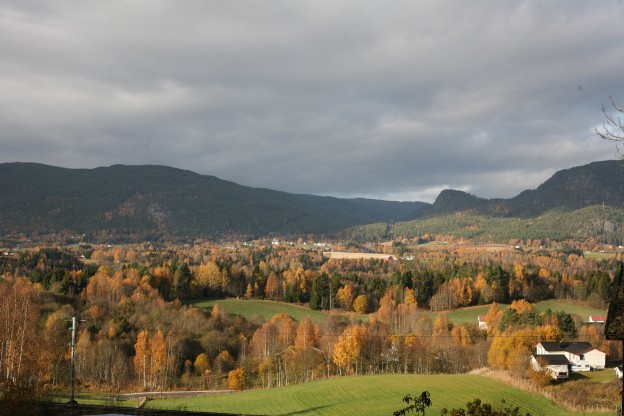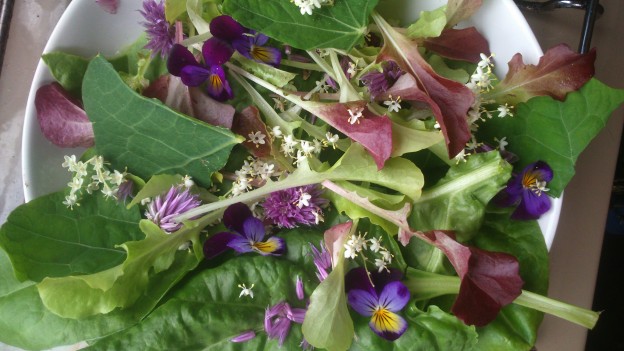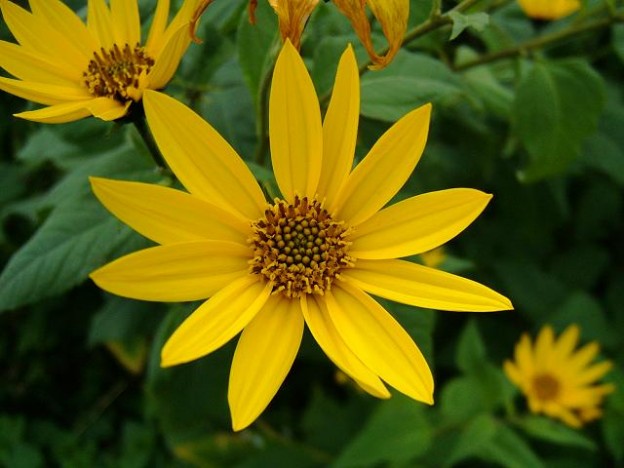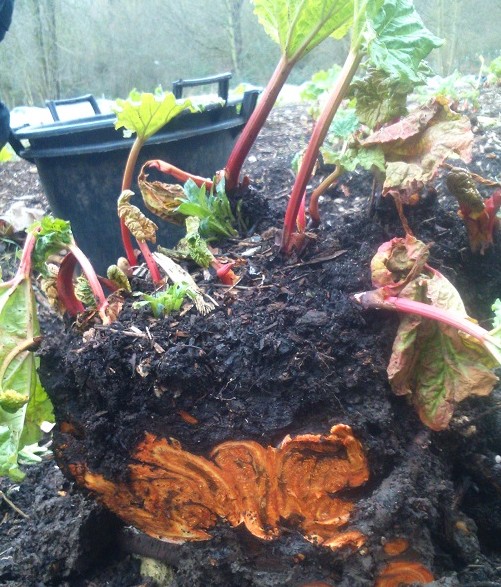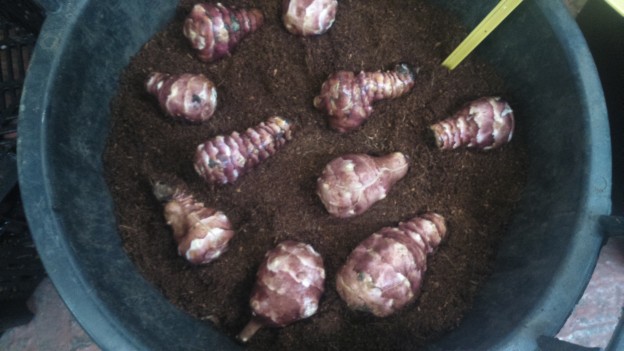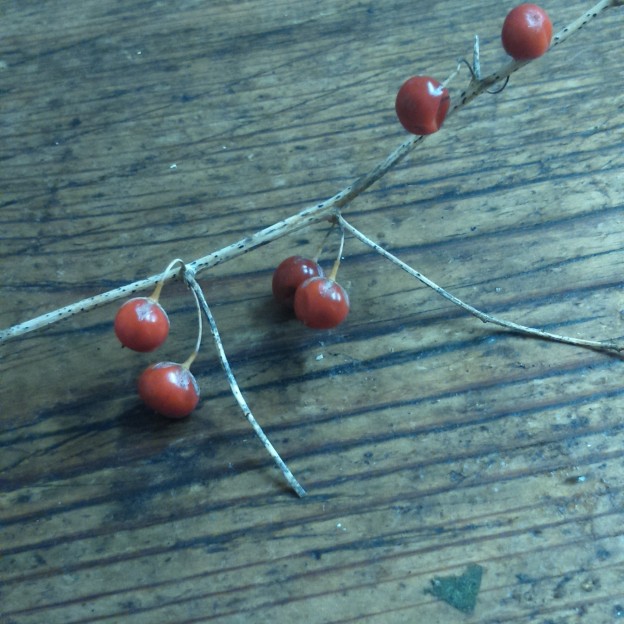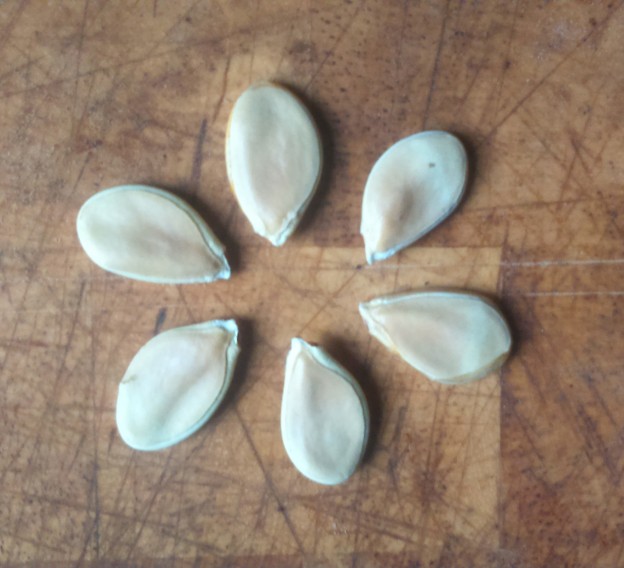You could argue that relative to the return, buying seeds yearly is a small and justifiable expense. Pouring over the seed catalogues can be incredibly exciting with its’ inspiring descriptions and beautiful photography designed to tempt even the most intrepid gardener into trying new or rare cultivars.
Myself, I fall firmly into the category of growers who plan and purchase seed annually. Only a few years ago did i begin saving seed of my own and like many I began with my Tomato seeds. This autumn, with my mind focusing on narrowing the impending “hunger gap” we will undoubtedly face in the colder climes of Norway I’ve been paying close attention to the various cultivars of squash gracing the Market Stall. Hand on heart, I’ve yet to eat a squash I didn’t like. Some I definitely like better than others and there are many I’ve only recently come across.
I’ve begun saving seeds from the ones that have gotten thumbs up from both of us. I know that this is slightly risky. Unlike saving tomato seeds which self pollinate and can be counted on to reliably reproduce true to type, squash are able to pollinate each other and if grown in close proximity to another type can cross pollinate. The result would still look like the parent however the seed would then not produce true to type the following year.
Professional seed sellers take great precautions to ensure their specimen plants are pollinated only from the correct male flowers often binding a female flower just before it opens opening it to hand pollinate and then rebinding it to ensure the only pollen present is that which they have introduced. It’s not complicated, it’s something I plan to do next season. But in the spirit of adventure, this year I have harvested seeds from those squash I have eaten and enjoyed. There’s a good chance I’ll be able to raise a successful squash crop from them, but no guarantee the vegetables I get will resemble their parents.
I’ve taken a calculated risk. I’ve done this for some specific reasons. Firstly, I would rather begin learning the successful techniques for cleaning and storing seed before i have to do so with the true type seed of the lovely and rare heritage Themla Saunders Sweet Potato squash I’ve purchased for next year. It took me two years to be able to purchase these 7 seeds as they sell out incredibly early, I want to do everything I can to ensure I don’t have to purchase them again!
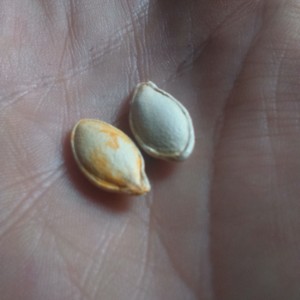
Spaghetti squash seeds. Left is dried 10 days, with membrane still attached, right is with membrane removed and ready for storage and future propagation
Secondly, I happened upon a Spaghetti Squash grown here in the UK. It’s not popular here, but it’s one of my favourites from when I lived in Canada. Delighted and excited to find it, I’ve waxed lyrical and at great lengths to many people and intend to gift seed to everyone I can. As far as I am concerned It took a brave farmer to plan this little known and lovely squash and people need to know about it to develop the market for it. Knowing that allotment people tend to be adventurous and willing to share their bounty, I feel sharing the seeds may help develop a market.
Sharing the seeds out also lets me do some vaguely scientific research. My theory is since none of the people I have allocated seeds to are experienced in growing Spaghetti Squash but each has experience growing successfully in the past hearing of their successes will allow me to gauge if my seed saving techniques are correct. Like I said, “vaguely scientific”!
My method for cleaning seeds came from the packaging of my purchased Thema Saunders. It stated to remove the seeds, clean and allow to dry separated from each other on a flat surface. Further investigation on line suggested to remove the membrane which closely skins the individual seeds. My first attempts to do this was with the newly liberated seeds, it was slippery and difficult. In my second attempt to remove the membrane I waited until ten days of drying. This was also time consuming but much less slippery and therefore, assuming successful propagation will be how i continue to remove the membranes in future.
